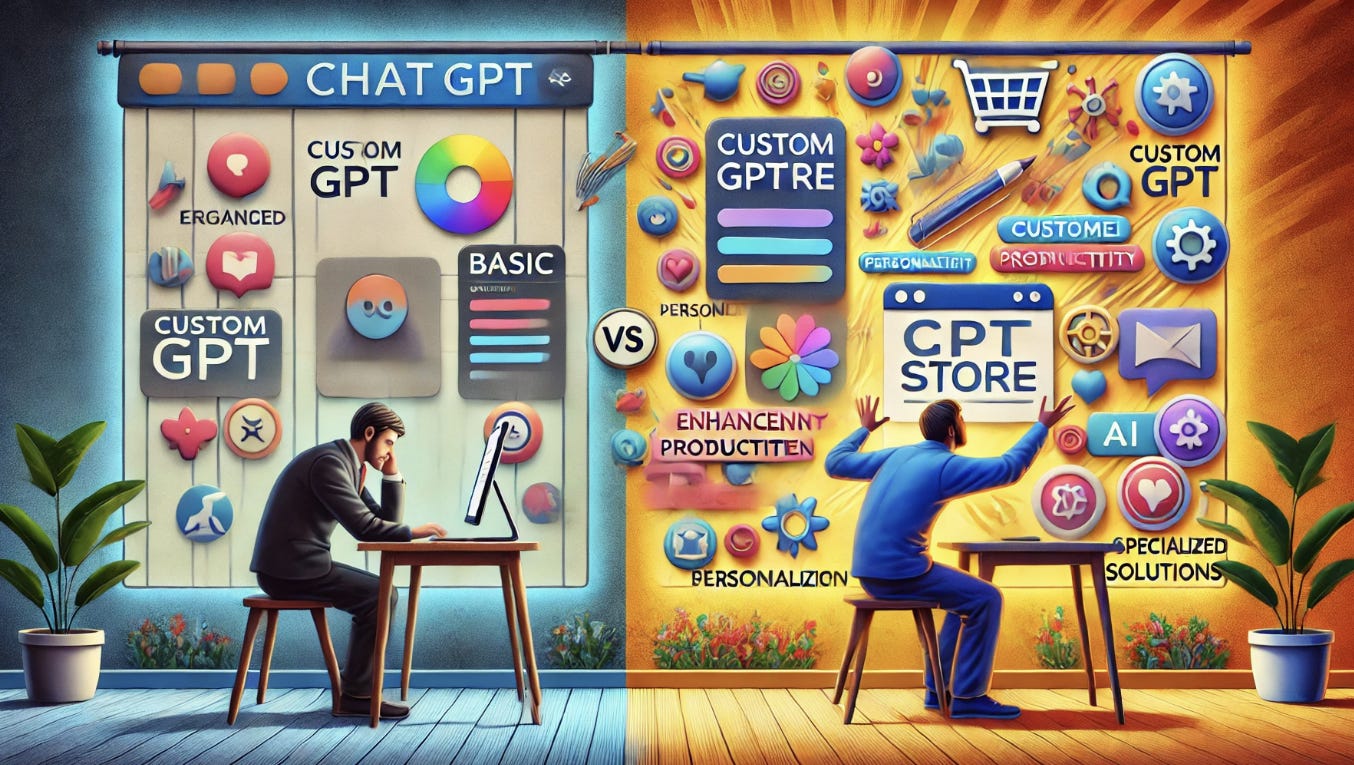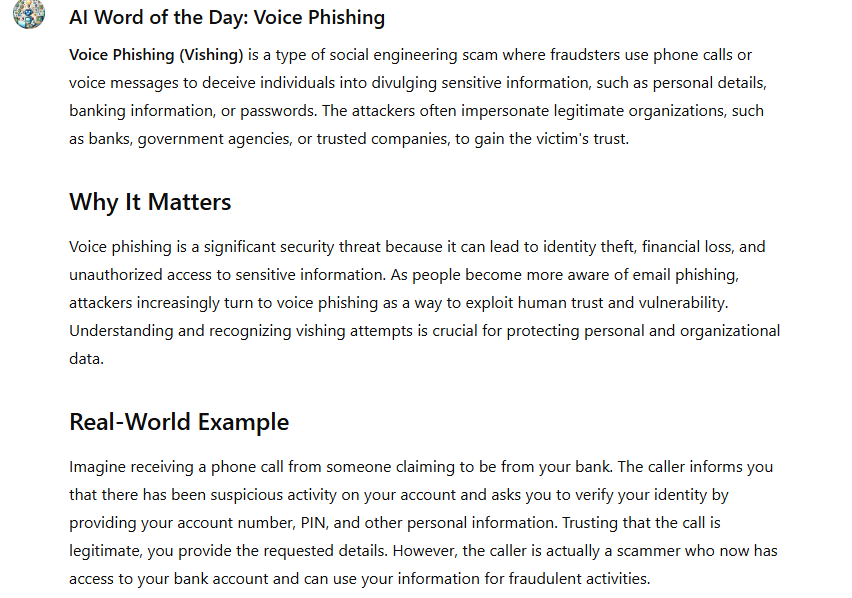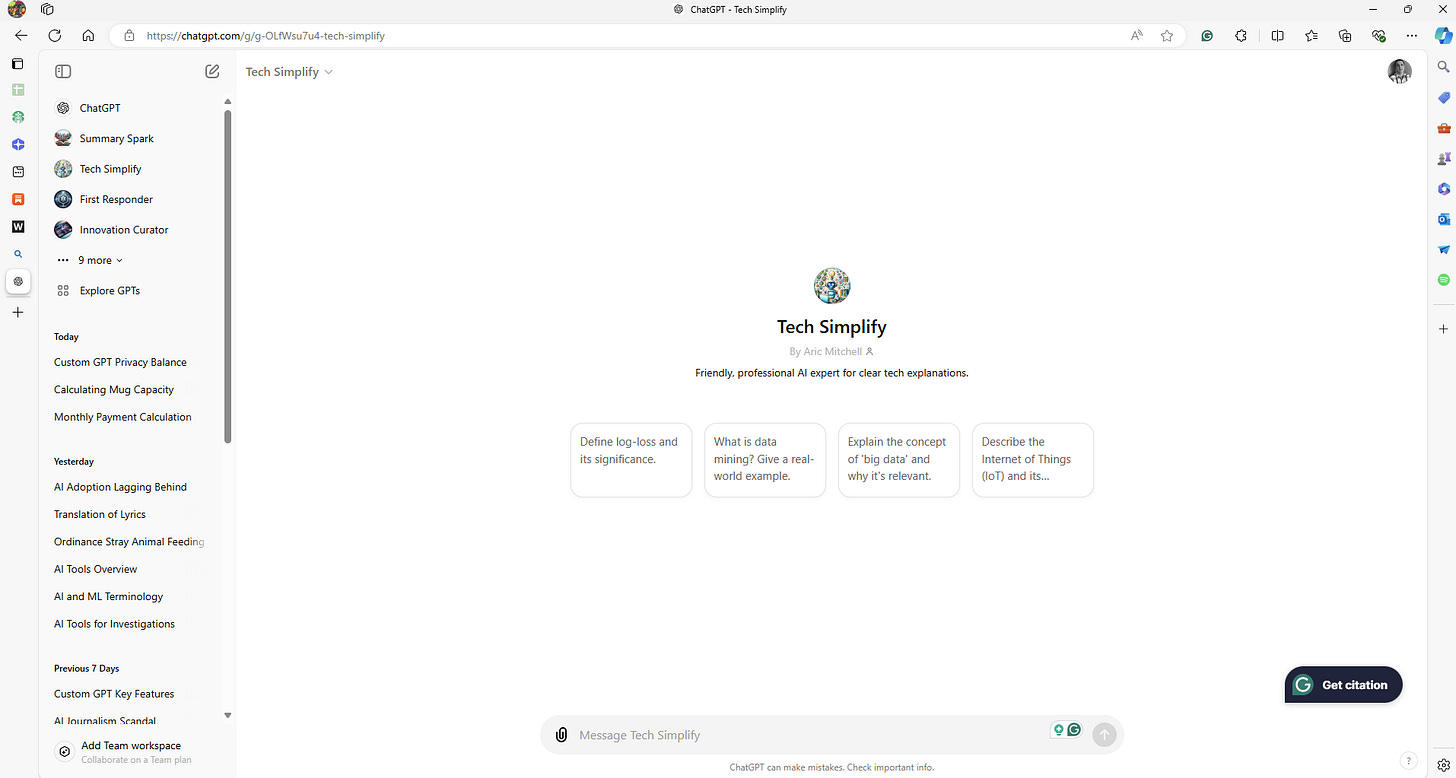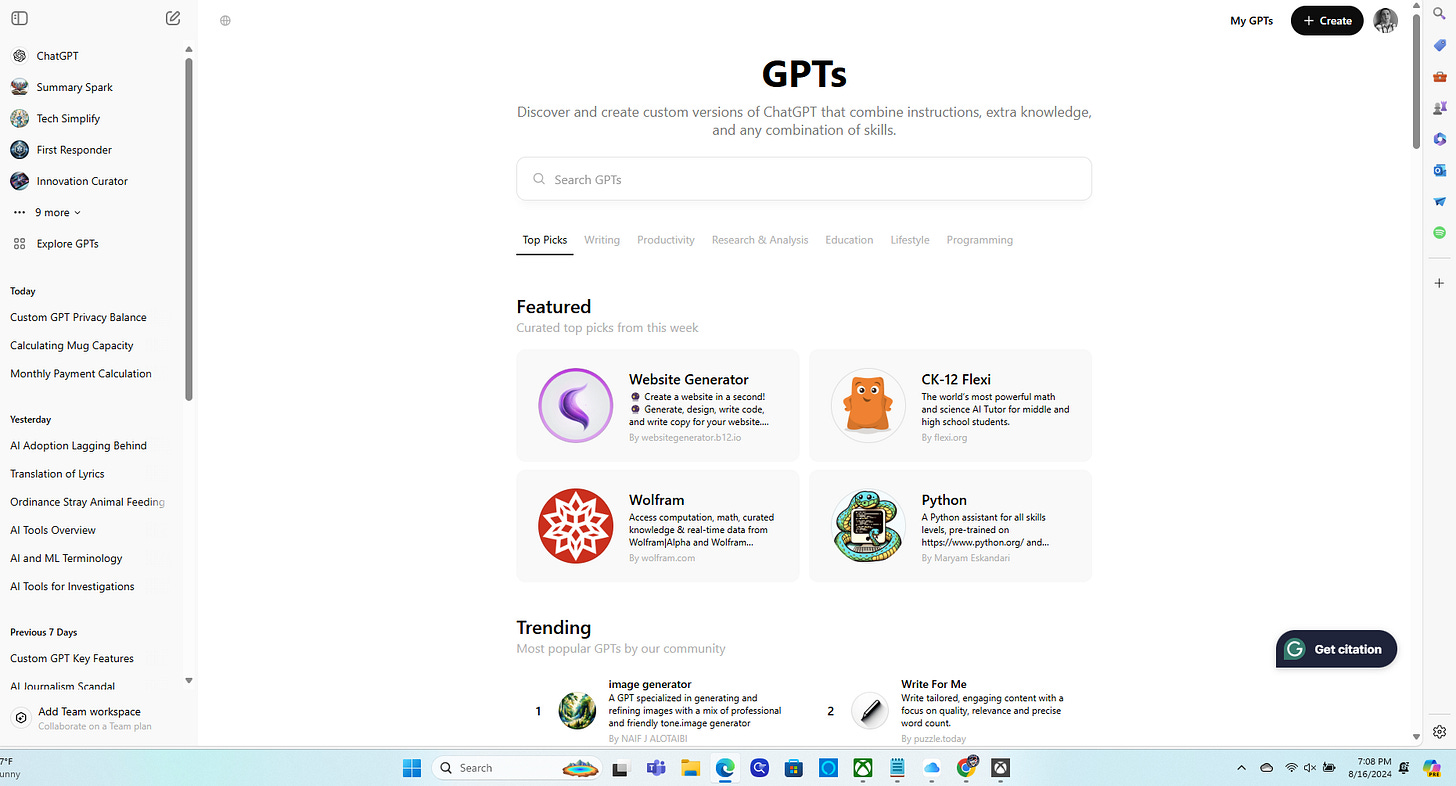ChatGPT Unimpressive? You're Probably Not Using It Right
Or: The Rise of Custom GPTs, Why They're Way Better, and How to Make Your Own
A lot of you probably use ChatGPT every day. But how many of you spend time in the GPT Store?
It’s easy to dismiss when you need a quick fix — a social media post here, a summary of a long document there — but overlooking it is leaving the true power of ChatGPT out of your workflow.
That’s because the GPT Store is where Custom GPTs live. And Custom GPTs can mean the difference between “sounding like an AI” and getting more tailored and insightful results.
If you’ve never explored the GPT Store, it’s never too late to start. This article will offer a comprehensive look at how we got here, why it matters, and best practices for building a GPT (or 750) of your own.
ChatGPT’s Evolution: From Plugins to Custom GPTs
ChatGPT has evolved.
It started as a basic chatbot, and then quickly explored ways to customize the user’s experience. Step one was Plugins. This feature allowed third-party vendors to build custom scripts that users could enable that went beyond ChatGPT’s basic functionality.
Then, OpenAI introduced custom instructions.
This feature enabled users to tell ChatGPT things to always remember when executing a prompt. (Doing so cuts the amount of seed information the user needs to supply before executing a task.)
Plus-plan users were the first to benefit, but OpenAI has since opened most of its functionality — albeit with limits — to all users, paid and free.
These developments led to the GPT Store’s creation, making Plugins redundant in the process. OpenAI officially retired Plugins in March of 2024.
The Store enabled users to create GPTs, a level of customization previously unseen during the AI Revolution. Millions of GPTs of varying quality arose as a result (with about 159,000 widely available by some counts).
Moderna went Custom GPT-crazy, creating the aforementioned 750+ GPTs for the specific uses their employees encountered each day.
Now everyone — even people with no coding experience — can upload documents and build customized solutions, based on their data, prompts, and needs.
Key Features of Custom GPTs Include:
Personalization: Custom GPTs let you adjust how they behave and respond to suit your specific needs. This creates a more personalized and unique interaction.
Instruction Fine-Tuning: You can provide clear instructions or guidelines for the GPT to follow. This ensures that the content it generates stays consistent and relevant every time.
Knowledge Base Integration: Custom GPTs can be trained with specialized knowledge. This makes them more effective in specific industries or for particular tasks. Got an informative PDF you don’t mind sharing? Simply upload it, and the Custom GPT will remember it for every interaction moving forward.
Custom Prompts and Responses: You can set how the GPT responds to certain prompts. This allows you to create predefined or custom answers to common questions.
Memory Capabilities: Custom GPTs can be designed to remember past interactions. This leads to a more coherent and context-aware experience in future conversations.
Controlled Output Style: You can choose the tone, style, and formality of the GPT’s responses. This helps align the communication with your brand or personal style.
Use-Case Specificity: These GPTs can be optimized for specific tasks or industries, such as customer support, legal advice, or creative writing.
Integration with External Tools: Custom GPTs can be connected to other software or APIs. This allows them to perform specific functions or pull data from external sources.
Scalability: Once created, Custom GPTs can be rolled out across different platforms. They can be scaled to meet the needs of various users or applications.
Why Custom GPTs Make More Sense Than Standard ChatGPT
Go to ChatGPT. Choose the model you want to use. Tell it what you want it to do. Decide whether you like the results or if you need to follow up with clearer prompts. Eventually, get the response you’re looking for, or at least make sure it’s close enough to “there” that you can handle the rest yourself.
That’s one way of using ChatGPT. It served us well. For a while.
But Custom GPTs make that model obsolete. With Custom GPTs, you don’t have to reinvent the wheel or engage in the same series of prompts every time you need to perform a specific task.
I often like to use the creation of my daily newsletter, Innovation Dispatch, as an example of where Custom GPTs come in so handy. Each day, I cover an AI WORD OF THE DAY.
Each entry must do three things: define the word, tell why it matters, and give a real-world example. Additionally, the section should follow this formatting:
Pay close attention to the headers. They’re a different font size from the body text.
If I were creating this from scratch, I’d have to give ChatGPT fresh prompts every day.
Create a section for my newsletter called AI WORD OF THE DAY. After I give you the word of the day, define the word, then tell why it matters in section two, and give a real-world example in section three. Make sure that each section heading is H2.
That would work as-is. However, creating a Custom GPT for this — in my case, it’s called Tech Simplify — lets me pre-program this GPT so it knows to do all of that ahead of time.
As a result, all I have to do is type or paste in the AI WORD OF THE DAY that I’d like to cover, and boom!, it gives me everything I asked for without requiring all the reminders and wordiness.
From there, all I do is copy and paste the final result into my email newsletter client (ConvertKit), and I’m off to the next task. This is a small example, but it highlights all the ways Custom GPTs are the smarter choice:
They Enhance Specialization and Task-Specific Performance
Custom GPTs excel in specialized tasks. With a narrow focus, they deliver more accurate responses than general-purpose AI.
Improve Consistency in Outputs and Interactions
With clear instructions and set knowledge bases, Custom GPTs ensure consistent interactions. This is crucial for businesses that need uniform responses.
Offer Time-Saving Benefits
Custom GPTs cut down on repetitive tasks. Users report saving up to 30 hours by streamlining workflows and boosting productivity.
Integrate With API and External Data Sources
Custom GPTs can link with APIs to access real-time data and perform specific actions. This goes beyond what standard ChatGPT can offer.
Screenshot of the GPT Store
Quick Examples of Popular Custom GPT Uses
Culinary Creator: Helps with meal planning and recipes
Fitness Routine Planner: Creates personalized workouts
Auction Item Lister: Assists with online listings for sites like eBay
Interactive Marketing Personas: Simulates target audience views
How Safe Is My Data?
Handling data with care is essential. If you use a Custom GPT for customer service, it can pull up info quickly. However, if sensitive details like names or credit card numbers get uploaded, they could be at risk of exposure.
To protect your data, start with clear guidelines. Only upload what’s necessary. Remove or replace any personal information. This process, known as anonymization, helps keep identities safe.
For those using the GPT Builder with an API, there’s an extra step you can take.
Encrypt sensitive data before sending it to the GPT. The model can’t process encrypted data directly, but you can still manage this effectively. Tokenization is a smart alternative. It replaces sensitive details with placeholders, allowing the GPT to function without risking real data.
If you’re not using the API, you can still protect data by anonymizing it before uploading. Additionally, limit access to your Custom GPT.
Only trusted users should interact with it. OpenAI’s data policies also offer ways to minimize risk, such as disabling data sharing and logging.
By using these strategies—anonymization, encryption, tokenization, and access control—you can leverage the benefits of Custom GPTs without compromising security.
How to Build Your Own Custom GPT: Tips and Recommendations
Creating a Custom GPT is simple and powerful. That said, results can vary depending on how much work you’re willing to put into it. Here's how to get started:
Access the Custom GPT Creator in ChatGPT via the Explore GPTs link on the left side of the page
Click the +Create button in the upper right-hand corner of the GPT Store.
Define your GPT’s purpose and audience.
Use the RACE model to configure:
Role: Define the persona.
Actions: List the tasks.
Context: Provide background info.
Examples: Offer sample outputs.
Set clear, specific instructions.
Add supporting documents to enhance knowledge.
Keep the conversation going with the configuration bot for however long it takes.
Test and refine based on performance.

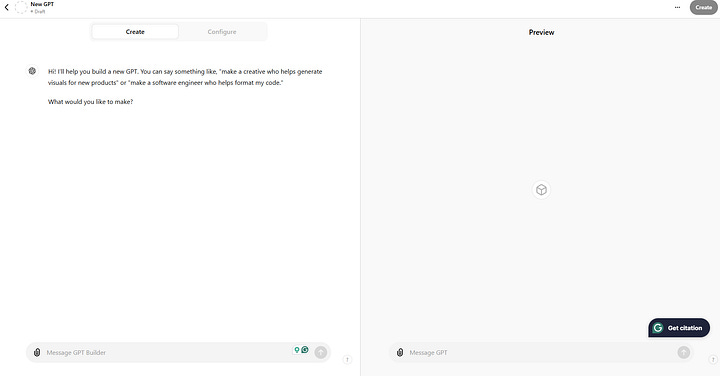
The GPT Builder has two tabs: one to chat and another that allows you to edit the configuration after creation.
Best Practices for Custom GPT Development
To create effective Custom GPTs:
Use clear, concise language.
Provide diverse examples.
Update regularly based on feedback.
Avoid overly broad or conflicting instructions.
Think of it as a work in progress. That means going back every so often and providing new data, testing, and feedback.
Don’t forget to save the results when you’re done.
Specificity and clarity are key to success.
Custom GPTs Are AI Productivity on Steroids
They offer personalized, task-specific models far better than standard ChatGPT. Creating AI assistants tailored to your needs unlocks new possibilities.
The benefits are clear: better specialization, improved consistency, time savings, and seamless data integration. Whether you're an entrepreneur, developer, or AI enthusiast, now is the time to explore this useful feature.
Start small with a single repetitive task. As you train the GPT to handle it, you’ll get better at knowing what works. Next, make a list of other repetitive tasks that you would like to streamline.
Create a Custom GPT for each one. Sooner rather than later, you’ll be able to 10x the already-massive productivity gains ChatGPT is giving you. Have you created a Custom GPT yet? Let me know what you’re using it for and how you’re liking the results.
You can do so in the comments section. Or, feel free to email me. I’m eager to learn what you’re doing and happy to help however I can.



